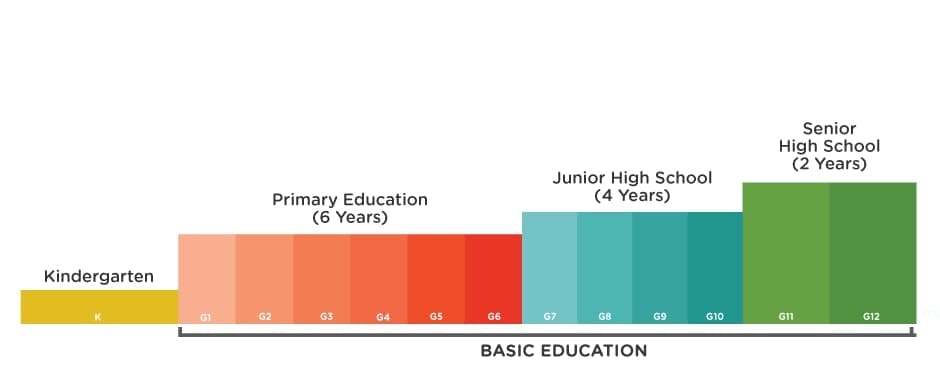Introduction
The growing technology has left no industry including the education system which gives K-12. K-12 is an English expression that refers to grades. Which is gaining worldwide popularity in countries like the United States, Canada, and India as well.
In India, the K-12 education system is being broadly accepted by Both Government and Private schools. The Indian Government also made primary education free under a scheme Sarva Shiksha Abhiyan.
At present, there are around 1.46 million K-12 schools in India out of 54% are run by the center/state government, 21% of schools are managed by local authorities, and the rest by the private sector. All the boards are united with the K-12 system.
K-12 education
In the K-12 education model, K stands for kindergarten, and 12 stands for 12th grade. Which includes kindergarten, primary, secondary, and high school basically pre university education in India.
K-12 education includes a lot of student-teacher interaction where teachers encourage students to ask more questions and Assign them some assignments to promote interesting learning habits and better careers ahead.
Individual attention is the key factor in this education system. This type of method of teaching is beneficial and lets the students develop their learning and understanding capabilities on their own. Teachers always play an ideal guiding star for success in students’ lives they are the role models of their students.
Rather than a typical classroom activity where students prepare and submit assignments, they encourage students to add value to their assignment in the way of a personal touch like their points of view and ideas. They also motivate them to take part in various discussion clubs and forums to exchange views and ideas.
Different levels of K-12?

K-12 schools are generally divided into three different Levels, Which are mentioned below:
- Elementary school (grades K-6);
- Middle school or junior high school (grades 7-10); and
- High school (grades 11 and 12).
In some cases, Elementary school and Middle school grouped together but High school kept separate.
Which subjects are studied in K-12?
K-12 Education covers a wide range of topics like:
- Language arts (reading, writing, and comprehension)
- Mathematics
- Science
- Social studies
- History
- Art
- Music
- Physical education
- Foreign languages.
Alternatives to K-12 education?
There are many alternatives to K-12 education some are mentioned below:
- World schooling
- Unschooling
- Homeschooling
- Private schools
- Online Schooling
You may even be familiar with terms like unschooling, world schooling, or online schooling. You should use the method of schooling that you or your child would like.
The K-12 Indian Education System
The introduction of the K-12 education system’s rising popularity in Indian education. The education system has broadly accepted and made it compulsory to adopt for both private and government schools.
The way of teaching, content, and resources has changed to a great scale-up to facilitate more involvement of students. Schools nowadays start investing a good amount to create the best infrastructures for their students.
Students on the other hand just grab the best of these facilities and available resources which are offered to them for optimum learning. This type of platform is what the K-12 education system is promoting and this is what more and many more schools in India are adopting.
Creating individuals is the most important target of the present-day education system. Then the K-12 should be adopted. The more teacher-student tunefulness and the more self-reliable, independent individuals who can create a difference. Not just for the school but for our society as a whole is what this new educational revolution has to offer.
Benefits of K-12 education?
The K-12 education system offers many benefits to students like building a strong foundation in critical subjects and skills, making approachable high-quality education to all, helping students improve their social skills, developing technological proficiency, and preparing students for the competitive national and international job market. Here are some key points too which are mentioned below:
- Variety of Modes of Instruction
- Easy and simple Assessment and Grading
- Better Communication with Teachers and Peers
- Custom Learning Options
- Well organized Distribution of Resources
- Parental Participation Enabled
- Flexible Learning Options
- Better Time Management and Planning
What types of assessments are given in K-12?
Assessments at the K-12 level can differ greatly. It can be formal as a standard test or informal as a class participation or homework completion.
These assessments are usually used to know the progress of a student over time and to identify the areas in which they may need more attention or help.
Assignments at the K-12 level can be different because they depend on the age and level of the student. They can be simple tasks like math problems or reading comprehension, exercises to most complex projects like research papers or presentations.
These assignments are designed to assess a student’s understanding in class and their ability to apply it to real-world situations.

Priya Bansal is a seasoned education writer with a passion for creating insightful and engaging content. With a background in education and a knack for research, she excels at producing articles, blogs, and resources that inform and inspire. Priya’s work contributes to the enrichment of educational discourse and empowers learners of all ages.






